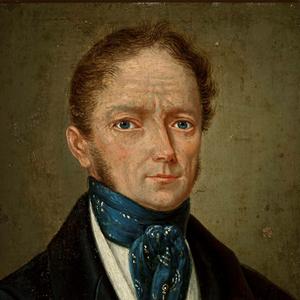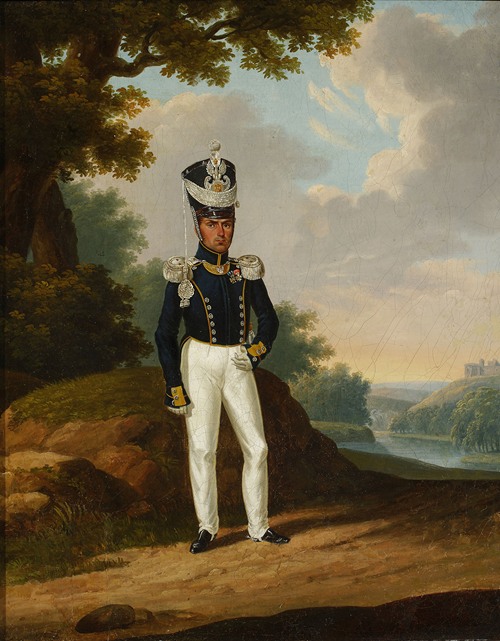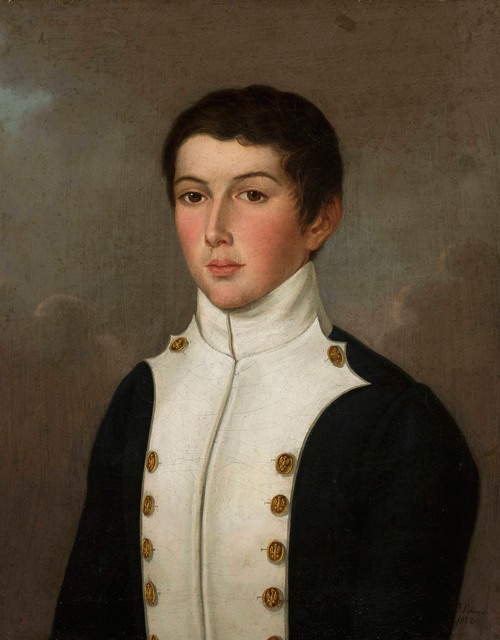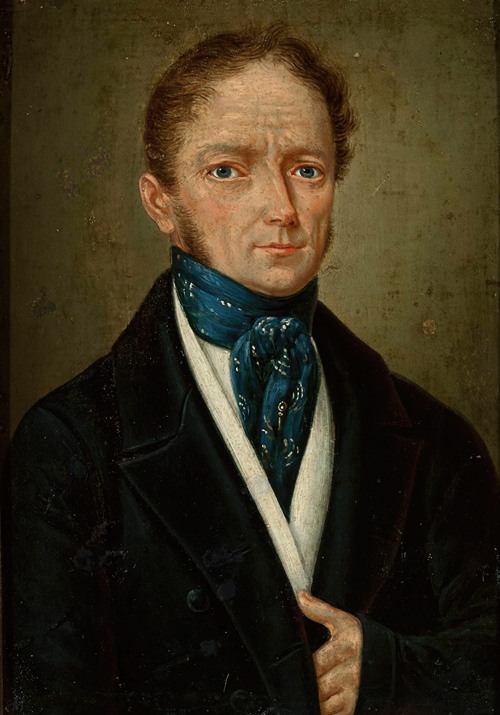

Józefat Ignacy Łukaszewicz was a Polish painter and painter in miniature.
He was born in Žiežmariai on 6 November 1789 as son of Teodor Jozef Łukaszewicz (1747–1805), noble and owner of the village council and administrator of several towns in the property of Władysław Franciszek Jabłonowski in Czeszewo, and Katarzyna Zofia Marianna Łukaszewicz born Baranowska (1765–1843). He was brother of Józef Łukaszewicz [pl] (1799–1873), historian, publicist, librarian and publisher. He studied first in Vilnius as pupil of Jan Rustem. After the Napoleonic army entered Lithuania in 1812 he decided to join Napoleon's elite honor guard, made up of noble youth, becoming a soldier of the third Lithuanian regiment under the command of General Jan Konopka.
As a result of the battle of Słonim, General Konopka and some of his soldiers were taken prisoner. The soldiers from the broken regiment, including Józefat Łukaszewicz with the remnants of the Great Napoleonic Army, returned to Saxony in the retreat. The sick Józefat was cared for by an uncle Jan Baranowski, who lived in Warsaw, a well-known violin maker and manufacturer of musical instruments. In the years 1814 - 1818 in Warsaw he studied with Józef Kosiński, Antoni Brodowski and Antoni Blank at the Department of Fine Arts at Warsaw University becoming a great battle painter who was able to describe in detail in his paintings weapons and uniforms of the army of the Kingdom of Congress Poland.
He also painted landscapes, religious subjects, interiors and above all portraits and portrait miniatures. At the Warsaw Exhibitions of Fine Arts in the years 1819, 1821 and 1825, Józefat Łukaszewicz exhibited his paintings, for which in 1819 was awarded a gold medal, and in 1825 he was awarded together with Fryderyk Chopin by Tsar Alexander I of Russia with a diamond ring. From 1819 to 1830, he was court painter to the Count Konstanty Zamoyski (1799–1866), Polish aristocrat, Chamberlain of the Emperor of the Russian Empire, Nicholas I of Russia and statesman of the Congress Poland.
He worked also for different members of the Russian Imperial Court such as Grand Duke Konstantin Pavlovich of Russia and Joanna Grudzińska his second wife, for them he created a series of paintings of soldiers with true and photographic accuracy taking into account all the details of uniforms and equipment. He died in Warsaw on 3 January 1850 and was buried in Powązki Cemetery. His works are in numerous churches ed museums, including the Lviv National Museum, Polish Army Museum, National Museum, Warsaw, National Museum, Szczecin, Belweder and Russian Museum in Saint Petersburg.


